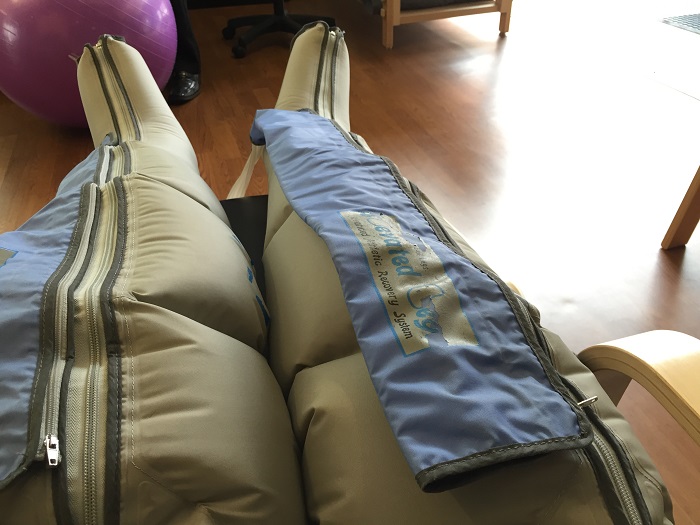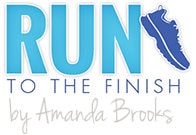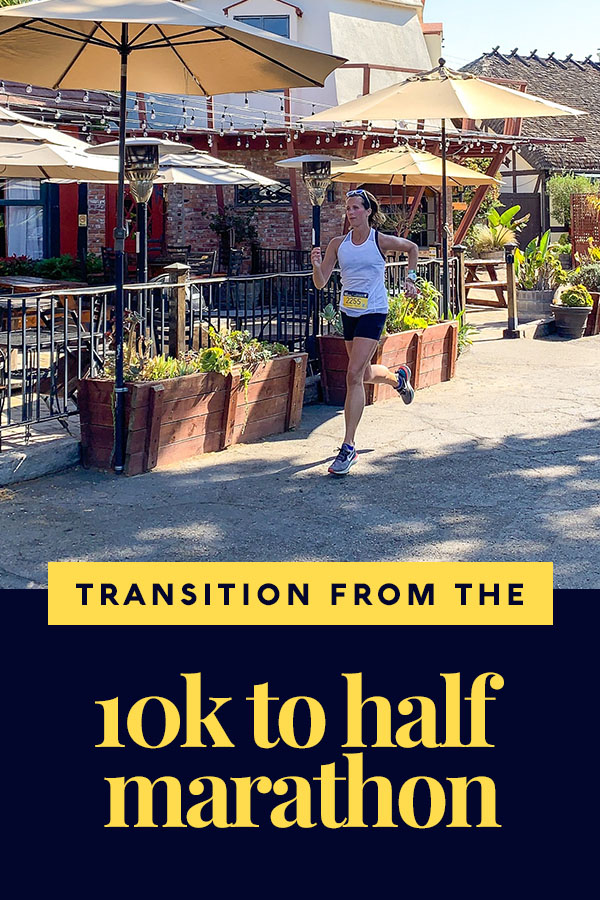You’ve decide it’s time to tackle 13.1 miles. Maybe because a friend talked you in to a crazy race vacation adventure or maybe you’ve done some 5k’s and 10k’s, now you want a whole new challenge. This guide will help you go from 10k to half marathon.
Either way this half marathon training schedule is designed to help beginners build the mileage on your legs in a safe way and cross the finish line feeling strong. This plan does not focus on crushing your time, but on enjoying the whole process of running!
The half marathon is my favorite distance.
It’s still challenging enough that I have to maintain regular long runs and strategy in my training, yet doesn’t require the dedication and physical stress of a full marathon. I can easily complete several races over the span of a year, and run them for fun or in an all out effort to achieve a PR with dedicated training.
Not interested in the tips, then just click here for a printable version of the training schedule!
If you have a solid base, it’s relatively easy to transition from the 10k to the half marathon with an additional 8-12 weeks of training.
10k Vs Half Marathon Training
How much more do you need to run?
Many runners can get by on minimal training for a 10k race. It’s a distance that’s doable if you’ve trained for a 5k or have been running casually for awhile. However, if you test your limits for a half marathon without proper training, you’ll be in a world of pain and at risk for injury.
Days Per Week
A 10k training plan that aims for a sub-60 minute race might have you run four days per week with a long distance of 6-7 miles, maxing out at about 20-25 miles per week. Meanwhile a first time 10K plan could easily be achieved with just 3 weekly runs!
A half marathon training plan generally prescribes 4-5 days of running per week, with long runs ranging from 12-15 miles, maxing out around 40-50 miles per week.
(Note: first time half marathon runners don’t NEED to do a long run of over 10 miles.)
Each runner is different, but the general expectation should be an increase in weekly total mileage, which will help you on race day to have the combination of speed and endurance to hit your goal.
Differences in Training Plans
Most 10K plans will include speed workouts, so the main difference with a half marathon plan is that intervals become longer or you might also be playing with tempo runs, progression runs and goal pace miles.
Additionally because you’ll be adding in more miles, you will absolutely need to get on board with TRULY easy runs. Low Heart Rate training is helpful for many new runners to learn that easy feeling.
Strength Training Prevents Injuries
In half marathon training, you’ll also need to be more diligent about things like glute strength, hip stretching and overall strength training. The longer you run, the more you need your body to be able to maintain good alignment and not fatigue.
A stronger body will not only allow you to handle the miles, but to increase your endurance and speed.
You’ll see in the half marathon training plan below that all of these components are woven in to your week. Which makes the next section crucial! You have to embrace recovery and start treating yourself like an athlete.
Mobility and Recovery Become Even More Important
With fewer rest days between workouts, more intense training sessions, and increased mileage, injuries can occur during half marathon training if you don’t follow these tips.
Strength and recovery days are included in training programs for a reason. Your body needs them! You are not the one special runner who can skip them. We’ve all tried and the results are the same, knee pain, IT Band issues and fatigue.
As your distance increases, your muscles will need to learn to perform for longer periods of time to keep you going at the pace you want. But more than anything, you need to think about your training differently.
- Don’t put intense days back to back
- Don’t do more than the training plan recommends
- Embrace rest days so you can go hard on speed workout days
- Embrace the idea of easy running as a means to increase your endurance
- Spend more time walking in general to add time on feet
- Practice fueling and hydrating more on long runs
- Learn how to fuel for race day vs training
Injury Proof Your Body
As noted previously, a key part of half marathon training is adding in a few key moments of strength, flexibility and mobility. You can add many of these to your warm up, to your strength training day or simply do them in the evening as you’re winding down for the day.
5 minutes daily will net you BIG results.
Not being injured means consistent training, which means having the race day you want!
- Resistance Band Workout For Hip Strengthening And Glute Activation
- Hip Stretches to Undo Effects of Sitting
- Improve Core Stability for Endurance
- Improve Hip Extension and Mobility
- Hip Stability Exercises to Prevent ITBS and Runner’s’ Knee
Can You Go From the 10k to Half Marathon in A Month?
As a running coach, I don’t recommend this for most people. If you have a huge fitness base from doing other things like OrangeTheory or CrossFit, it’s more possible, but will require you to be extremely diligent about recovery and fueling.
How Long for 10K To Half Marathon?
This plan is 12 weeks and provides a really good amount of time for a solid training cycle. However, you might be able to shorten this training plan to 8 weeks if you have recently completed a 10K and are feeling good with your weekly mileage.
Can You Base Your Goal Half Time On Your 10k Time?
While you can certainly make a calculated guess for your predicted half marathon time based on a recent 10km race, there are more accurate ways to determine your goal time.
A lot of components go into choosing a finish time:
- current level of fitness
- injury history
- running history
- race course
- race goals
It’s easy to pick a goal of wanting to finish under two hours, but maybe that’s too aggressive for your first because you haven’t had a chance to put in enough miles.
Or perhaps you’re selling yourself short and should be aiming for under 1:45. The best way to determine a half marathon pace that won’t have you hitting the wall or running below your skill level is to practice finding your average running pace.
- Pick a consistent route you can run every few weeks that is similar to your race course
- Keep the run easy and watch your HR
- As your fitness improves your pace should drop while your HR remains the same
- A few months in you’ll have a solid base and can start to add in speed work
- Try adding in 1 mile at your goal race pace to a longer run each week
- If it’s a reasonable goal pace, you should be able to continue building those miles at goal pace
Printable Half Marathon Training Schedule
This Half Marathon Training Plan is designed to help you transition from the 10K to half marathon feeling strong and healthy! Remember that each new distance is an automatic PR, so instead of worrying about crushing it the first time around, focus on finishing.
Then you’ll have a baseline on which to build your next half marathon goal!
Click here for a printable version of the schedule!
Otherwise you can pin the following image to reference anytime and if you’re looking for something easier, checkout the Couch to Half Marathon Training Plan or How to Walk a Half Marathon.
This plan doesn’t give you tons of workouts or specific strength training plans, but those are included in customized coaching plans we create. So if you need something tailored to you, reach out!
Easy Runs
Remember that 80% of your total weekly volume should be what we all Zone 2 or easy running. That means you should be able to carry on a conversation during these runs.
You may need to do run/walk and that’s ok!!
Fueling Long Runs
Unlike your 10K training, you are going to need to practice fueling during your workouts. This means any run that is over 90 minutes AND it’s a great idea to practice with fueling during fast running as well.
Nutrition plays a huge role in having enough energy not just to complete the run, but to improve your recovery. If you don’t recover well then the next run is going to feel harder.
Hydration is part of your fueling plan! Learn how to carry water while running so that you can sip electrolytes and stay on top of hydration. This is going to improve your energy levels and recovery.
Half Marathon Training Program Days
While the days here are laid out with a rest day on Monday and long run on Saturday, you can move these around to work with your lifestyle.
There are a couple of keys:
- You absolutely cannot skip rest days
- You still need to have cutback weeks (they are planned for you!)
- Try to give at least 2-3 days between hard workouts, which includes long runs
Looking for more half marathon training tips?
- Additional free half marathon training plans
- 18 Things I Wish I’d Known Before My First Half Marathon
- What to Wear for a Half Marathon
- Half Marathon Fueling Strategy
Other ways to connect with Amanda
Instagram Daily Fun: RunToTheFinish
Facebook Community Chatter: RunToTheFinish
Sign Up to Receive a Weekly Newsletter with Top Running Tips





 9 Best Trail Running Shoes
9 Best Trail Running Shoes

Aayush Kumar Gupta
tips to runner:
(1) Honestly. I thought (stupidly) if I spent money on shoes, I’d be fine. I thought the blisters (during training runs) were because I had weak feet and it was just part of the training game. I did cross the finish line. I collapsed and crawled to the side. Several people asked if I needed medical aid. I lost two toenails and my feet were a bloody mass of blisters. I later learned that you need to run in shoes much larger than normal. I was running in tight shoes. They were size 10 and a half. Later, I upgraded to size 12 and a half, and I didn’t have a single blister. It’s not only OK to consult someone who knows running shoes, it’s necessary.
(2) I severely undertrained—the longest run I’d done prior to race day was 11 miles or so. Don’t do that. It’s stupid. I couldn’t walk for 3 days after. Get those long runs in.
(3). For guys, make sure you bodyglide everywhere and especially protect the nipples. That same first race, I burned the tops of my nipples off (friction, stupid), and had extremely uncomfortable thigh rash. It hurt to wear a shirt. It hurt to wear shorts. It hurt to walk, and it hurt to sit down. Climbing stairs was NOT an option.
It’s a miracle I decided to do another one, but I did get smarter.
I’m training for my 37th full marathon on in October (Long Beach).
Don’t be me. Please. All that pain was almost completely unnecessary and mostly occured because of a lack of foresight, a lack of consulting the right expertise, and thinking I could just muscle through it. I could, and I did, but it cost me dearly.